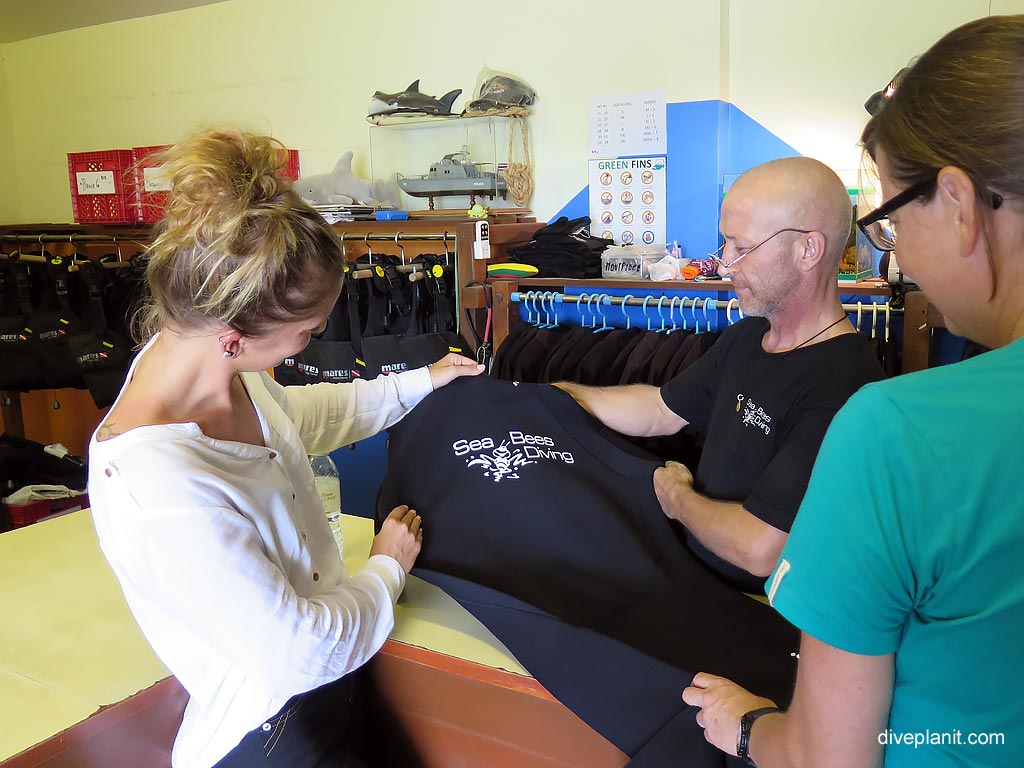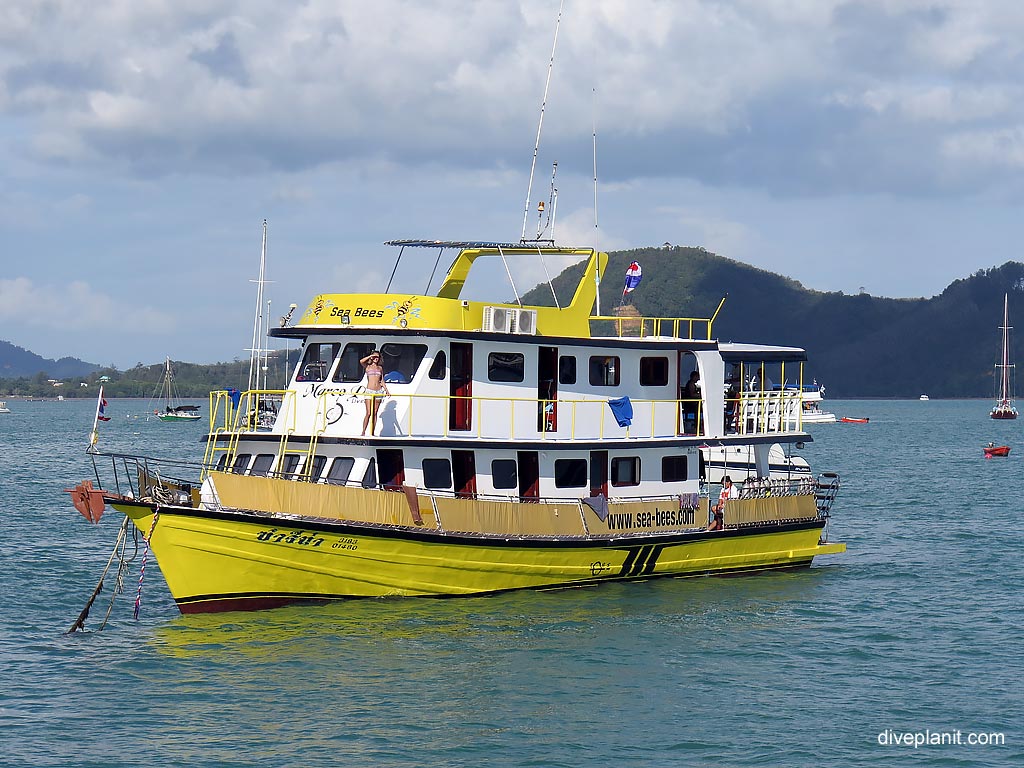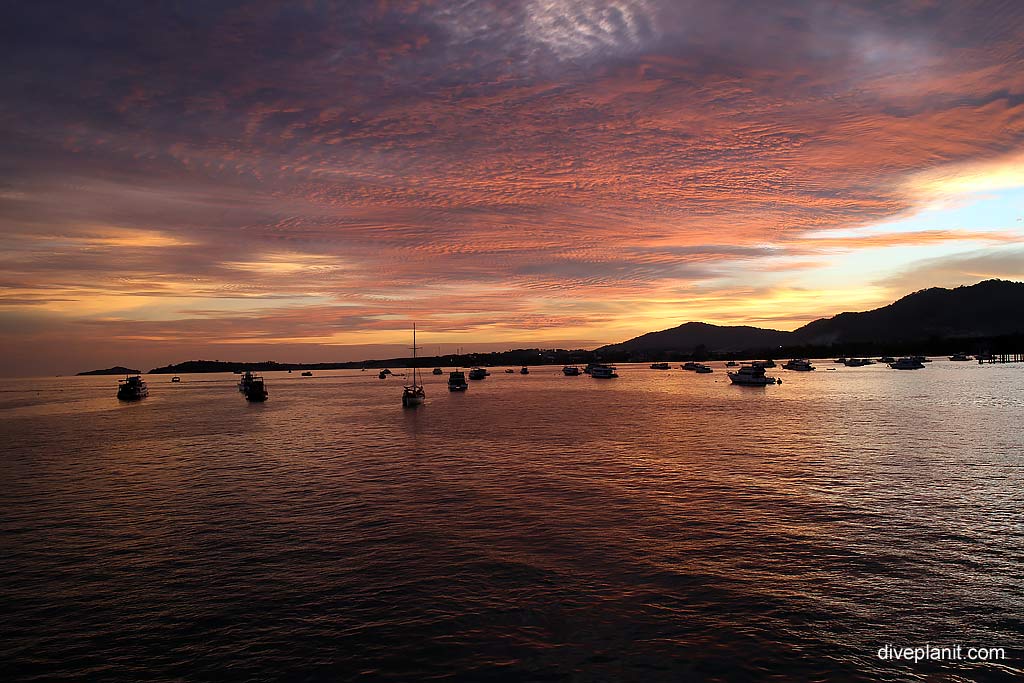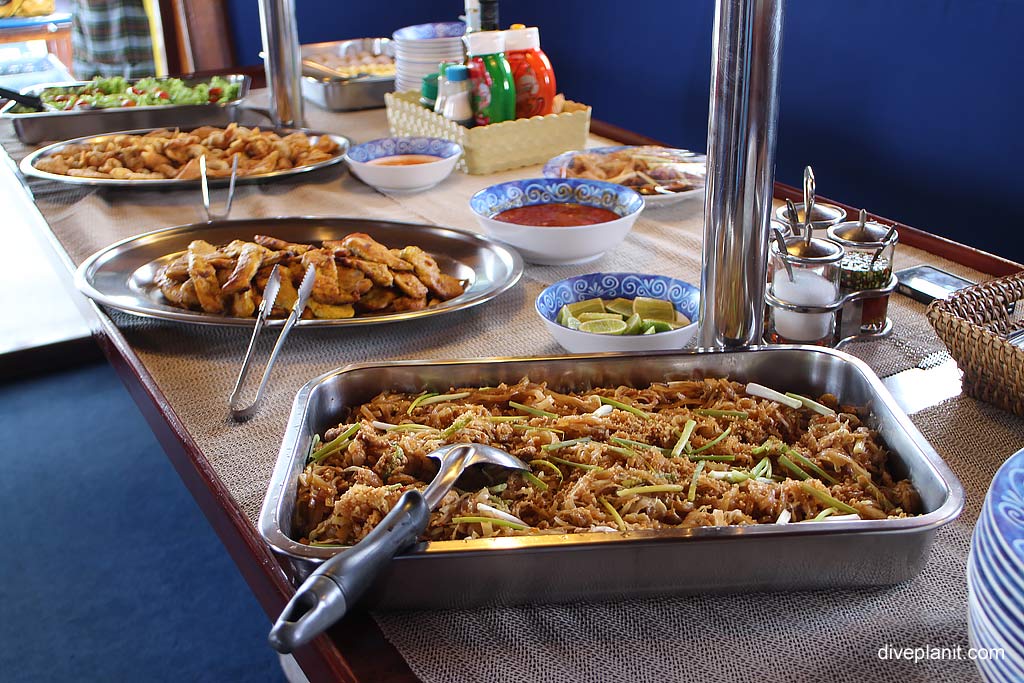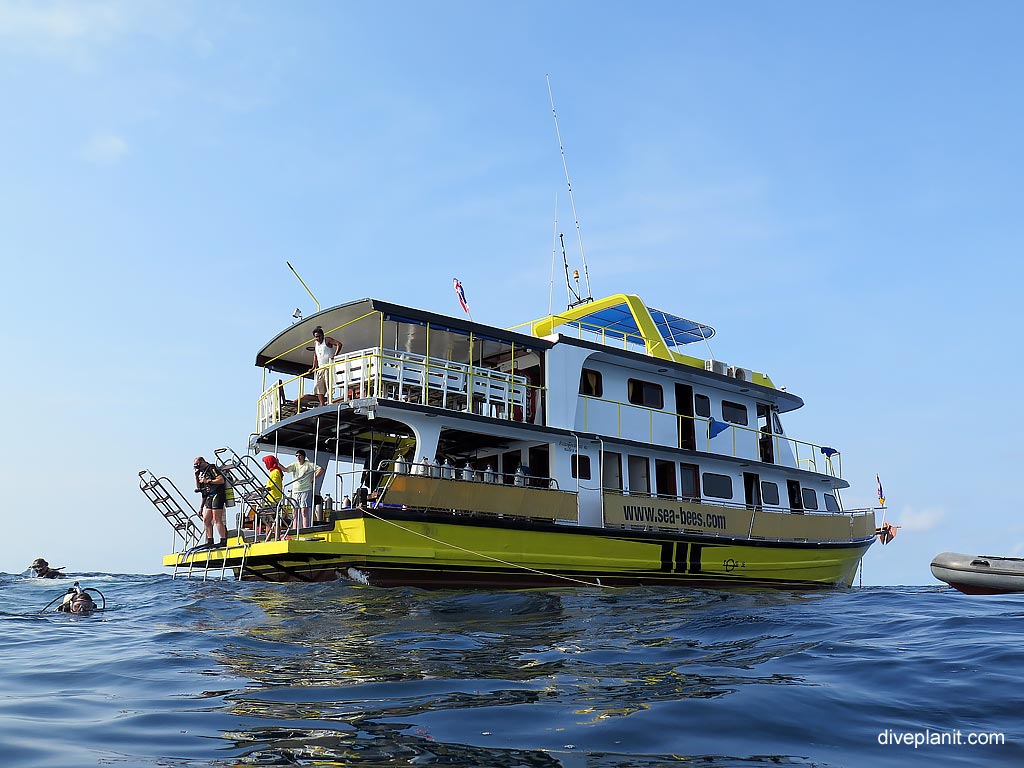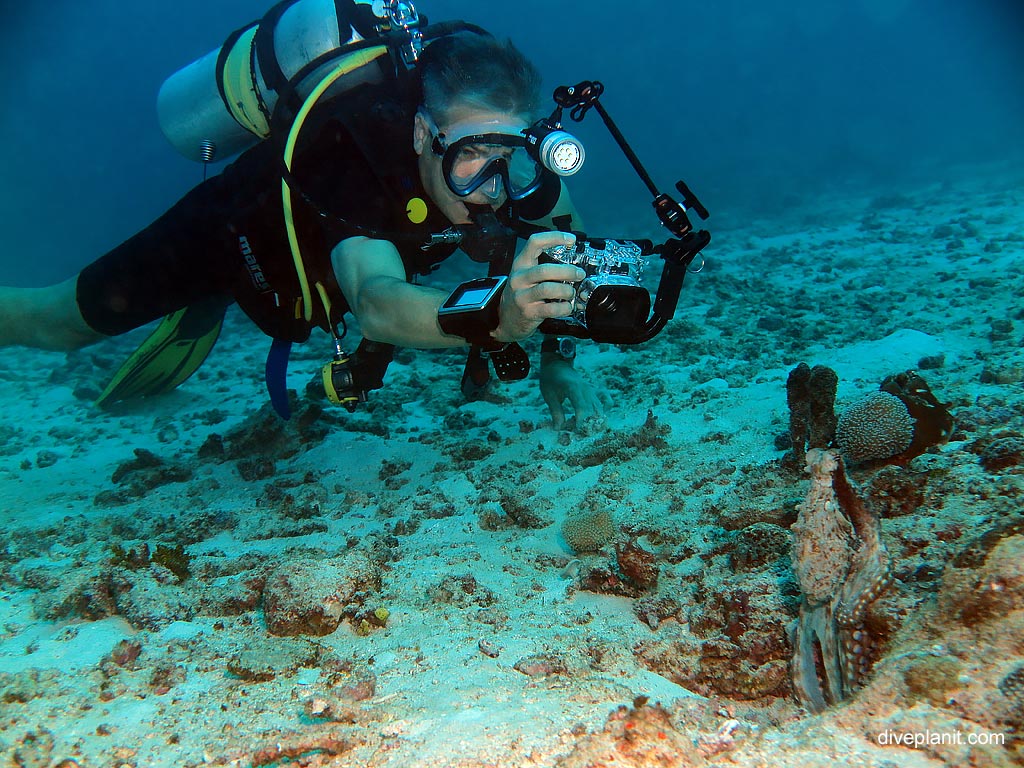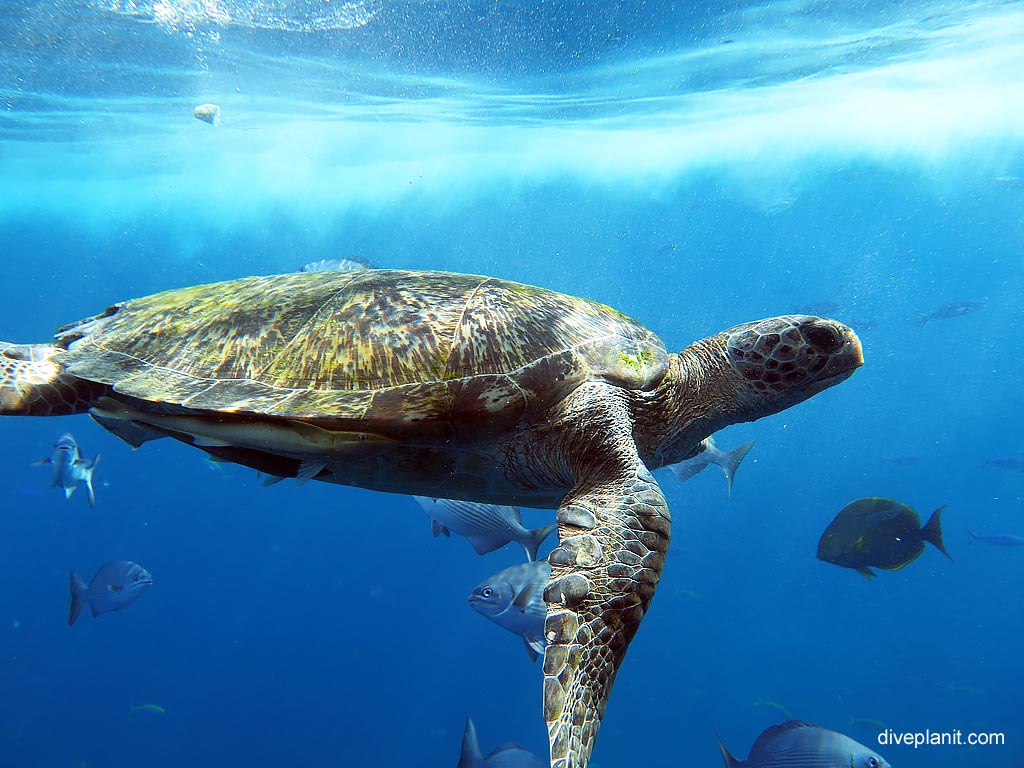So what’s a dive trip like on Sea Bees dive liveaboard Marco Polo? We took a 6-day trip aboard the Marco Polo into the Similans National Park and Richelieu Rock – 6 days well spent. Here’s how it went.
The adventure starts at the dive shop where you are kitted out at the Sea Bees dive centre in down town Chalong, Phuket. You get a named crate which is very methodically packed with gear (either your own or rented from the dive shop: a wetsuit (we choose shorties – it’s really all you need in 29°C water), BCD, regs, gauges, mask, snorkel and fins all strapped in using your own weight belt.
You can leave your gear at the dive shop and just take your dry clothes and knick-knacks in a separate bag. Dry towels are provided onboard, and there is soft soap in all the showers and toilets. The dive gear and dive guests’ bags are taken down to the boat first – which is literally a 5-minute walk away. This enables the guests to enjoy a beer at the bar and begin to mellow into the experience.
On arrival at the boat you take your shoes off for six days! Yippee – now we’re really on holidays!
The Marco Polo has two main decks and a sundeck. The dive deck at the rear of the lower deck houses all the gear and has inside and outside showers. All the dive gear is left on the dive deck where it is stored securely and in a drying atmosphere. The guest cabins and three bathrooms are also on this deck, so from leaving the water fully kitted, to being de-fitted, showered and changed is about 6 minutes tops.
On the rear of the middle deck is the main guest area: a covered area with tables and benches open to the ocean breeze where you can do everything from eating, to writing up your dives, to reviewing photos. The all-important drinks fridge is in this area to.
Forward of this area is the enclosed saloon where the food buffets are laid out for each meal. It also houses a water station, hot and chilled, the all-important coffee machine, the library and the entertainment area: which is a mobile radio into which you can plug your MP3 player or USB stick.
Forward of the saloon on the crews quarters and the bridge, with a pleasant little area just in front of the bridge where you can sit, looking straight ahead and watch the bow plough gently through the waves of the open sea as the Marco Polo pushes on to the next dive site.
The top deck is for sunbathing, though it has shade too, and getting great and unobscured shots of the surrounding islands
First, there’s a general boat brief, then we are shown individually to our cabins, and their facilities; air conditioning, bar fridge, firm bunks, and that’s pretty much it apart from the mirror and clothes rack and towel rail.
The air temperature is 28 to 30°C and the cabins open onto a narrow walkway (which runs around the boat) with the ocean beyond. Many guests choose to leave their cabin door open 24 x 7. We chose air-con because of the cameras. You can also hang your towels and swimmers on the hand rail outside your door; pegs are provided and they usually dry within the interval between dives.
We quickly unpack and set up our camera gear before returning back to the lounge deck for dinner, which is only served when everyone is assembled. Each evening there is a choice of a main Thai and a Western dish (or both if it was a big dive day), and plenty of beer and soft drinks in the cabinet. Shortly after dinner, the Marco Polo sets out for the Similans, and as we hit the slightly wavy waters of the Andaman Sea, the guests start to wander off to bed, after grabbing a handful of seasickness tablets that are complementary.
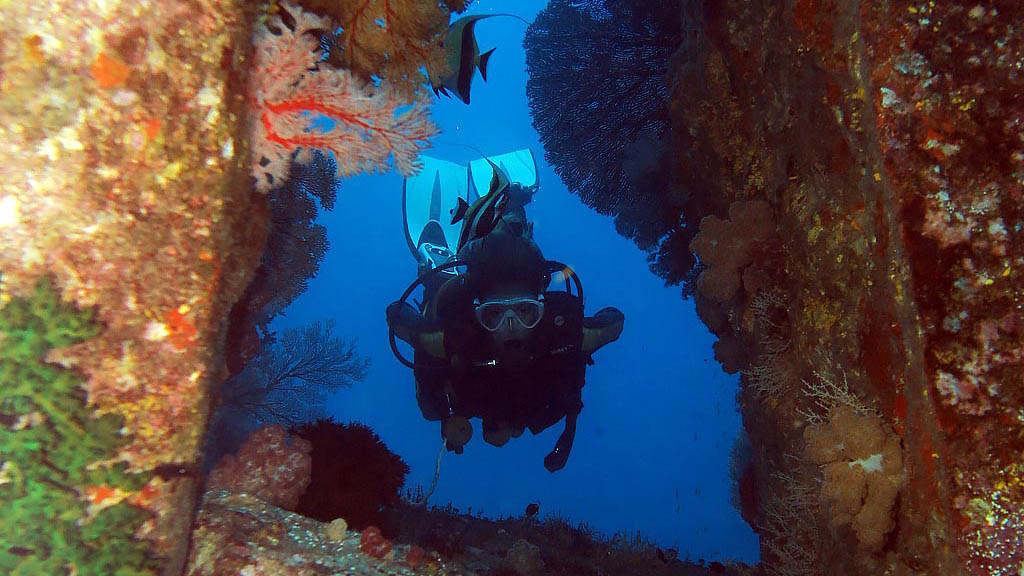
By morning we are moored in a sheltered bay in the middle of the Similans, and knocked awake just after dawn to attend the first dive brief whilst enjoying some light breakfast. This first briefing is a little longer than the rest is it covers the dive protocols, rather than just the dive site. This includes how and when to check your nitrox and where to record it; how the boat will collect you after a dive; entry and exit protocols; and all the usual stuff then it’s good to be reminded of.
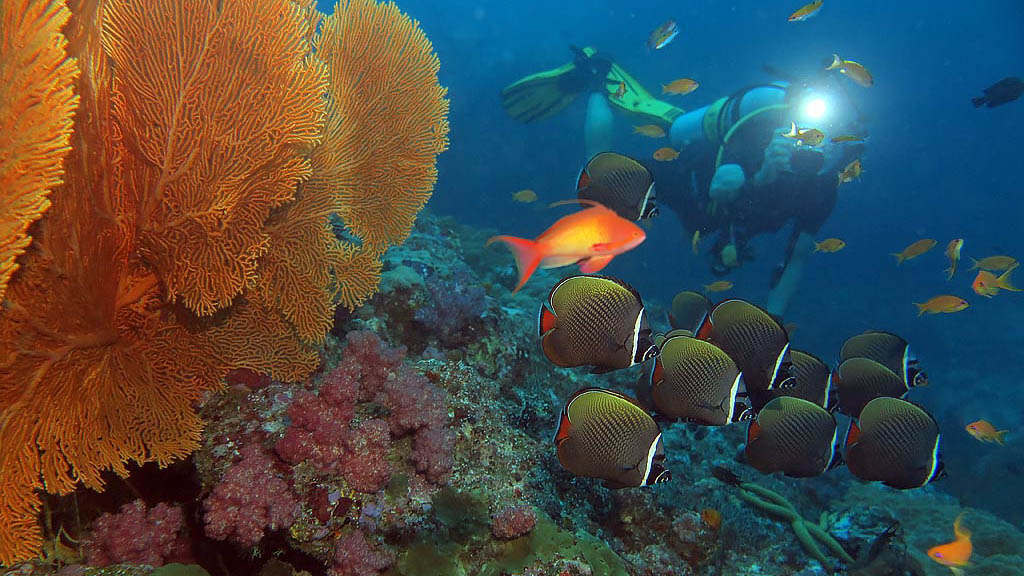
After being assigned a dive guide, next comes dive site brief. The words seem a little superfluous as we have a full-scale, relief map on the wall, with hard and soft coral areas shown. The only thing that is missing is where the critters will be hiding – but even that is attempted to be covered by the dive brief.
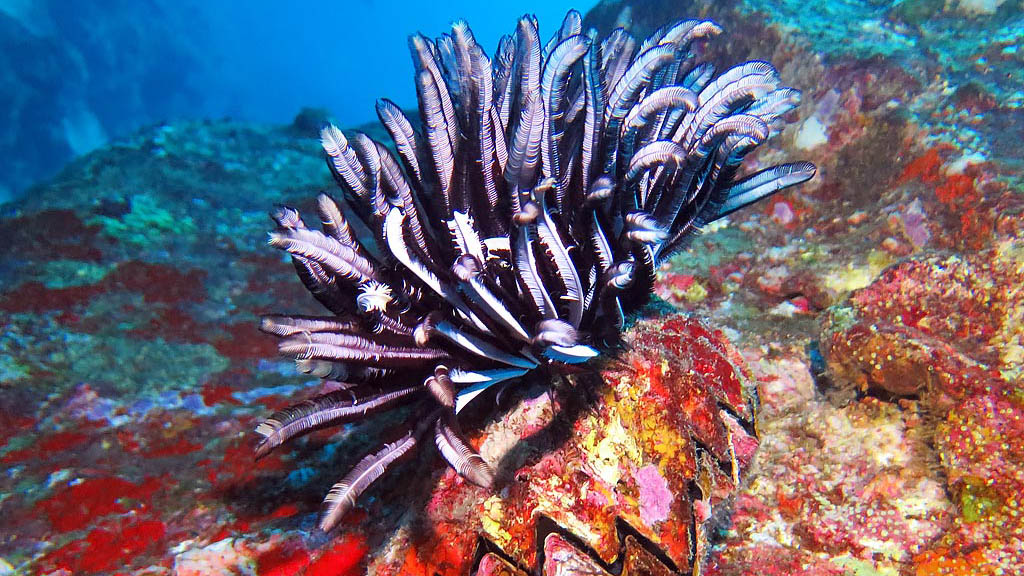
Finally, we all go down to the dive deck and start to kit up. There are two deckhands to help and they seem to pre-empt your every move making sure that you put your weight belt on before your BCD, that your bungee cord is around the pillar tap and not the pillar neck, and that your air is on, etc etc. They also quickly learn which camera belongs to which diver and will be ready to hand it to you after your dry giant stride into the water.
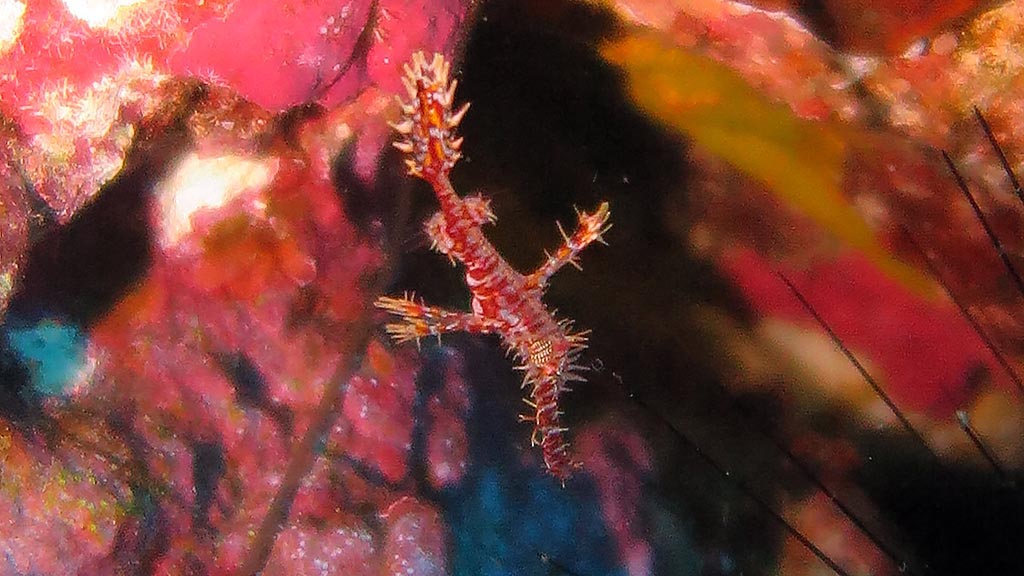
On many dives it’s possible, indeed sensible to descend and ascend on the mooring line; on others the captain will take us close in and drop us directly on the site, then wait a little further out until the safety sausages appear. The boat is deceptively small and maneuverable on the outside. The deckhands also throw out mermaid lines so that you can quickly pull yourself in. Twin ladders at the rear ensure that the 12 guests and three guides can be whisked out of the water quite quickly.
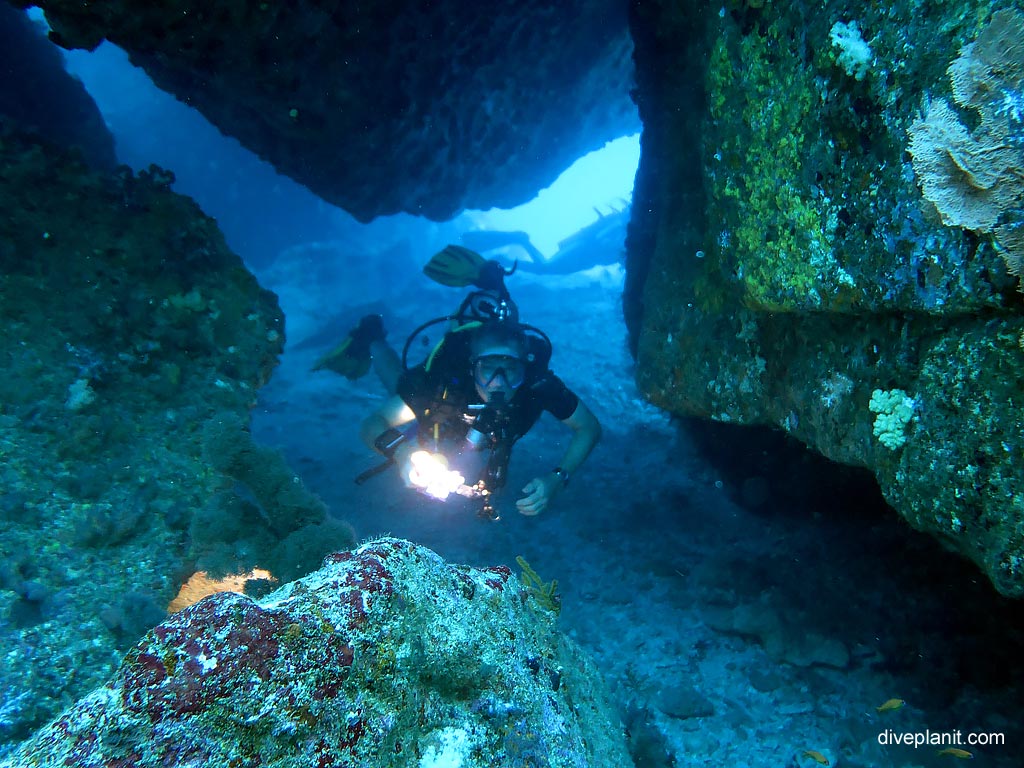
There are two deck showers and two shower cubicles to sluice off the saltwater between dives. The wetsuits hang on the dive deck and dry well between dives. Everyone’s gear is stored in their crate under their bench where their tanks reside – everything has its place.
After the first dive, the real breakfast is served which invariably includes bacon, eggs, as well as a selection of cereals, yogurt, fruit and Thai options; there’s also toast with spreads from apricot preserve to peanut butter, or with freshly brewed coffee, tea or cocoa.
After that, there’s about an hour before the next dive brief. Just enough time to write up your dive and check through your photos. Most of the guides can name most of the critters you’ll see. If they can’t there’s a full reference library on board to double-check that it was indeed the porcelain crab, the ornate ghost pipefish, and the trigger-tailed seahorse.
The surface interval intervals tend to be about 3 1/2 hours apart so if the first time is at 7:30 am, the mid-morning dive is 11 am, and it follows the same: dive brief and dive protocol as the first.
After a similarly varied lunch, the mid-afternoon dive is around 3 pm with the dusk or night dive between six and 7 pm. With the exception of Richelieu Rock which is just that, a rock shows itself only at low tide, the Similan Islands and Koh Bon and Koh Tachai are islands, so there is usually one lea shore, to moor up in overnight, but no guarantee that any particular dive site will be protected. The night dives usually take place directly beneath both in these sheltered moorings.
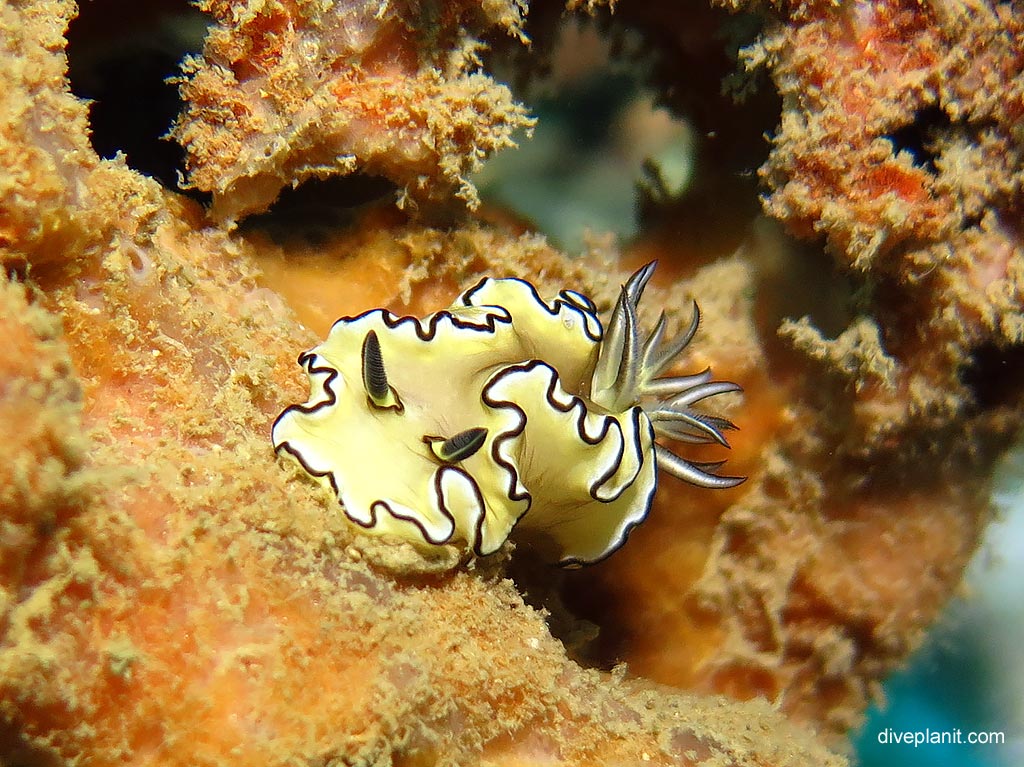
The timing also depends on the motoring: with conditions able to change rapidly, you are in the middle of the Andaman Sea remember, sometimes plans change on dive by dive basis as the cruise director weighs up the desirability of hitting certain sites versus conditions at that site.
The boat steadily makes its way north, stopping at Koh Bon and Koh Tachai and then making a sprint up to the Richelieu Rock for a full day before wending its way back down through the Similan Islands.
Four dives are offered each day, with just two on the last day, as the trip back to Chalong takes a good four hours.
An overview of, and four of the dive sites of, the Similans, are featured on this website; they are Similans Overview, Richelieu Rock; Koh Bon; Hin Pusa and Similan #9 Koh Bangu North Point. Here is some great footage of a couple of turtles that come and visit if you’re chilling in Donald Duck Bay (Koh Similan) between dives.

